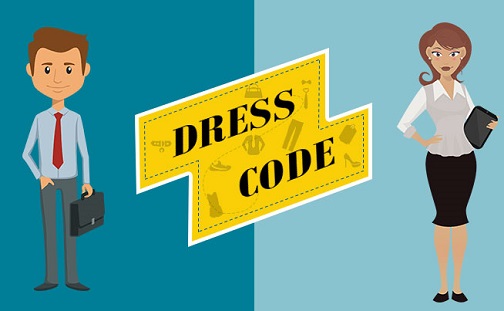Know How to Write a Dress Code Policy with Examples in 2024
Everyone in a professional setting is typically dressed similarly, whether in a complete suit or something more casual. The staff members are probably adhering to the company’s dress code.
You’ll usually be able to tell whether the dress code is professional or casual when you enter an unknown office. For instance, a law company will often require its fee earners and support workers to dress professionally. Most web design firms have a more permissive dress code (jeans, for example).
What Do You Mean by a Dress Code?
An employer’s expectations for employees’ attire at work are specified in a dress code policy. A dress code guideline is typically outlined in writing in an organization.
Since every industry is unique, different businesses have varied dress codes. In some professions, it is strongly discouraged to wear anything less than a suit, yet in others, the dress code is more business-casual.
When choosing a dress code guideline, there is no hard and fast rule. In fact, many businesses take delight in offering their staff more options in an effort to draw in a varied talent pool.
Of course, different professional roles within a firm may have varied standards for dress. Employees in management or client-facing positions, for instance, could be required to present a professional image at all times.
The same office’s building maintenance engineer, however, would find it difficult to do their duties while dressed professionally. To accomplish their jobs safely, they might need to wear protective clothes.
A company’s dress code policy should therefore specify who must wear what kind of apparel when.
Categories of Dress Code Policies
There are typically four categories of business dress codes:
Business formal business professional business informal business
Here is an overview of what each style of dress code has to offer to help you decide which is best for your business.
Discreet Business
The pinnacle of professional wear is a formal corporate dress code. Similar to a formal interview, every day requires the wearing of a suit and tie, pantsuit, or skirt. Some employers can even insist on wearing plain white shirts.
Employees must constantly appear professionally “groomed,” therefore neatly combed hair, decent business shoes, and business-appropriate clothing are required.
Professional in the business
While not nearly as severe as “formal business,” this dress requirement is nevertheless formal. Although suits (or the equivalent) are required for work, there is more room for personal style and expression.
For instance, you’ll see a broad variety of ties, printed shirts, and vibrant socks. Watches, jewelry, and statement purses are all more prevalent.
Commercial Casual
It can be more difficult to design a business casual dress code guideline because there doesn’t seem to be a common definition of what constitutes “casual.”
So what does “business casual” mean? It’s not sneakers, jeans, and shorts, though. Professional appearance is still expected of employees. They might, however, decide to keep things understated.
Men can roll up their shirt sleeves and omit a tie, while women can don stylish cardigans, trousers, or jumpsuits.
Casual
The least formal dress code is this one. Men can dress in a polo shirt or crew-neck sweater and dark denim pants, while women can dress in trendy fitted tops, skirts, and slacks.
It can be challenging to manage an informal dress code internally. There are things you can do as an employer to guarantee employees arrive at work properly attired. For instance, you may state in your casual dress code policy that you expect clothing to be presentable and respectable.
What Kind of Attire Is Best for Remote Workers?
This is a thoughtful query. What should the dress code be for persons working from home now that remote working (or part-time employment from home) is the norm?
The response will be greatly influenced by the employee’s job function and the employer’s general position. The employee should adhere to the company’s usual dress code guidelines, whether it be professional or casual, if they will be participating in virtual meetings or interviews that will be recorded.
There is a psychological benefit to establishing a working-from-home dress code regulation as well. A homeworker will be better prepared for the day if they dress for the office.
Write a Dress Code Policy: A Guide
Diverse companies may have extremely different dress codes. Some dress standards are more vague than others, leaving it to the employee to interpret terms like “formal business wear.” A dress code policy document may contain multiple pages, which is not uncommon.
You should always employ a cheerful, enthusiastic tone, regardless of whether your policy is exceedingly thorough or a little more lenient.
This entails stating the logic behind the dress code rule in straightforward terms. Employees are far more inclined to follow the rules and encourage others to do the same if they understand why they are in place.







